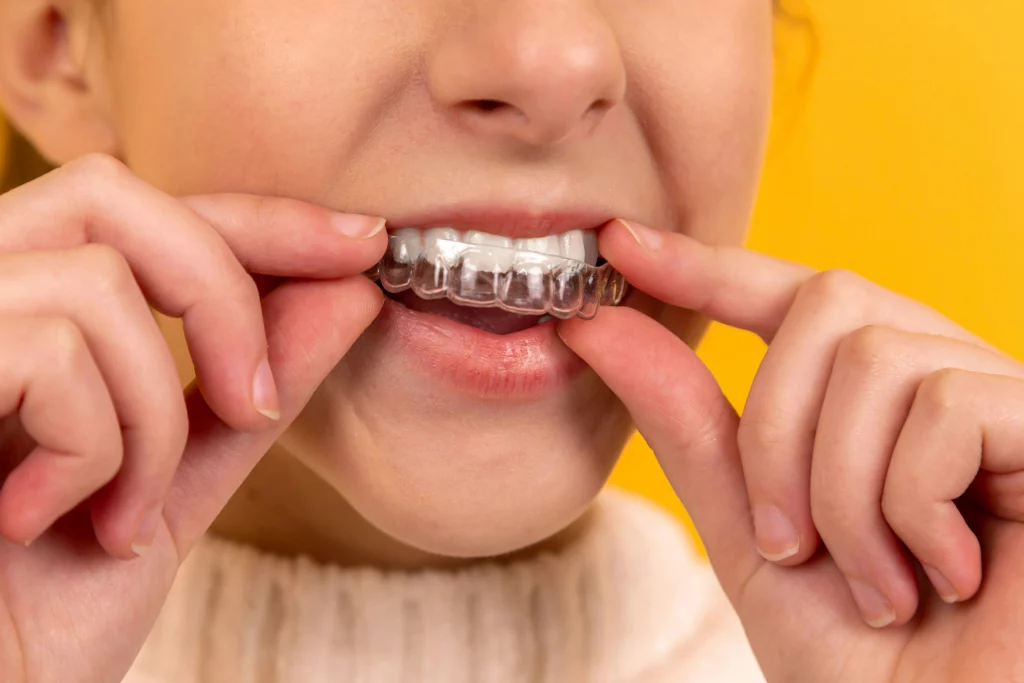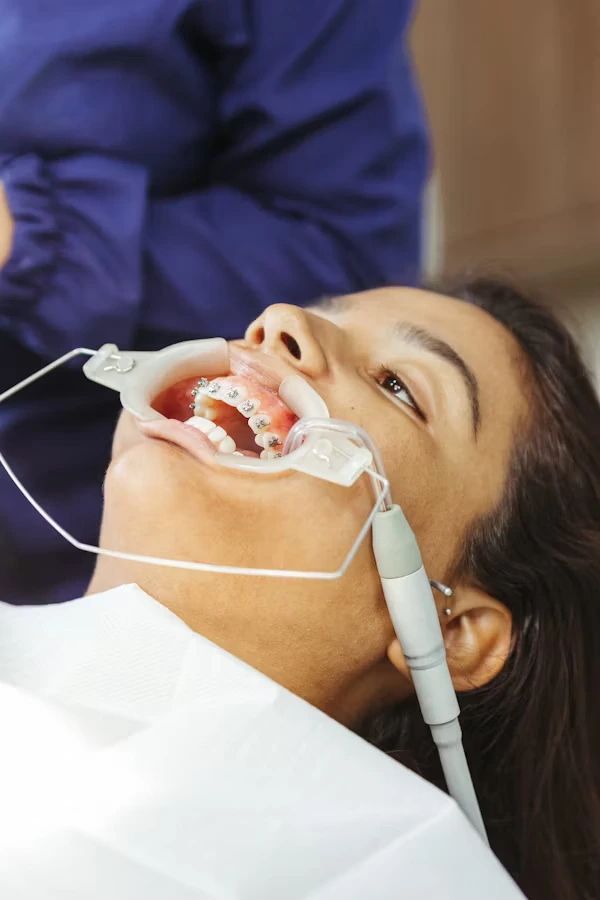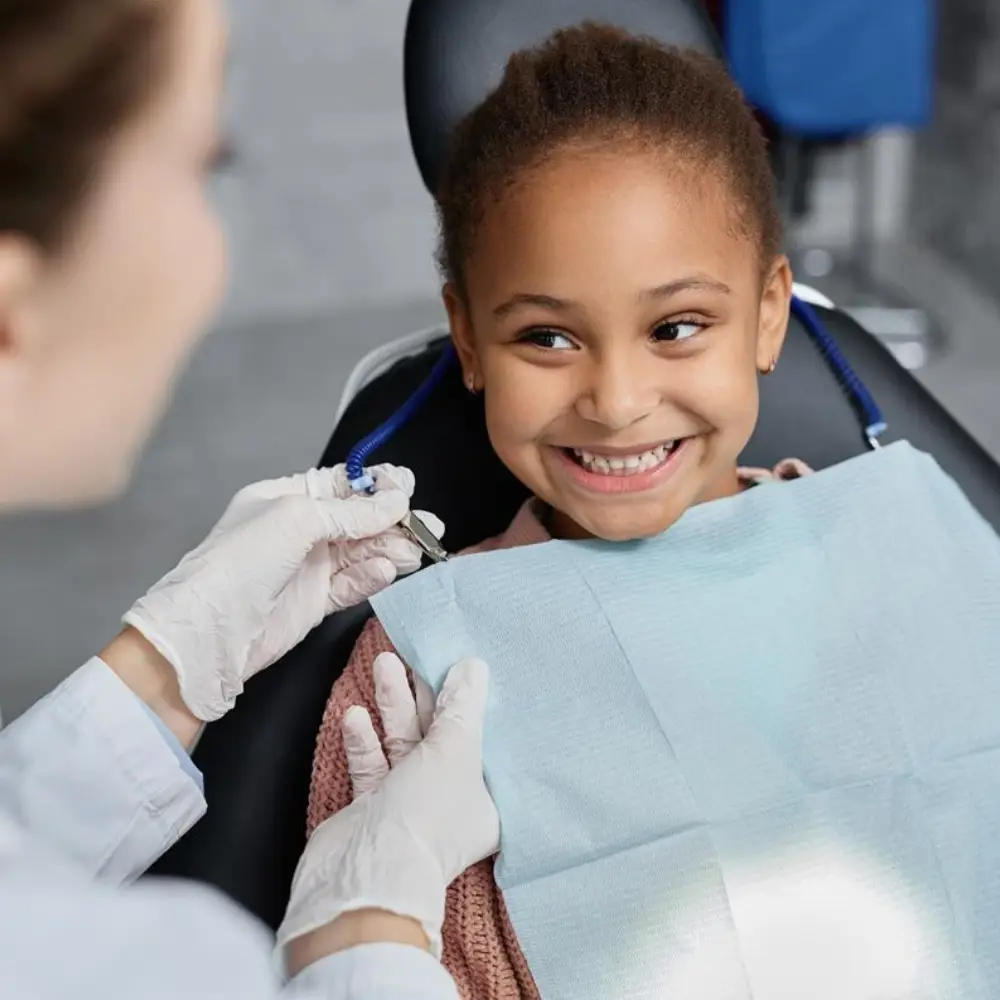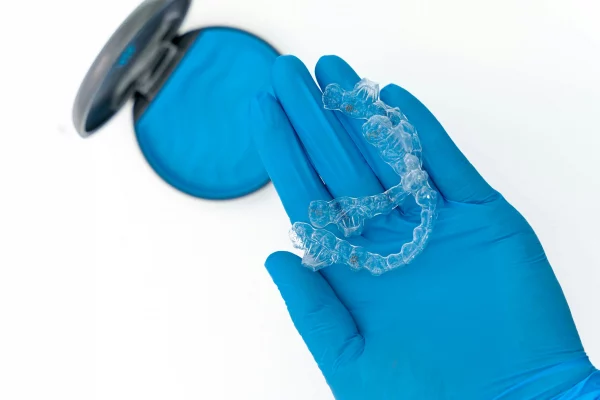Invisalign does not only straighten your teeth, it is also known to make you pronounce words better. In cases of crowded teeth, missing teeth or crooked teeth, the tongue and lips are either not well spaced to produce some sounds or not in the right place. This may complicate the pronunciation of normal words. It may be annoying to children who learn to articulate themselves correctly or to an adult who has to speak with confidence at work and home.
Clear speech is not limited to being comprehended. It also builds confidence and makes you relate more with other people. Invisalign is unnoticeable and accurate. It enhances the state of the teeth and allows you to speak more naturally and clearly with time.
How Invisalign Can Help with Speech Issues

The alignment of teeth and jaws is what causes speech problems. When they are not in the right position, they may alter the way the tongue and lips produce sounds and hence, the speech becomes slurred or incoherent. Invisalign provides a silent, noninvasive method of correcting these issues and thus allow individuals to have a better smile and articulate themselves better and with more confidence.
Misaligned Teeth and Their Impact on Pronunciation
Teeth help us make sounds. Airflow and tongue position may be disrupted when the teeth are crowded, loose or crooked. This causes difficulty in pronunciation of such sounds as s, z, sh, and th, where the tongue must be placed exactly close to the teeth. Children in the process of learning to speak might be frustrated. Poor pronunciation may cause a dent in confidence and speaking with peers or friends. Adults who have misaligned teeth can also feel that they can speak less clearly and feel uncomfortable in the workplace or with their friends.
The process of straightening teeth using Invisalign makes the process of speaking easier and more natural. The tongue and lips become more movable and speech is better defined.
Common Speech Sounds Affected by Malocclusion
Individuals who have misaligned teeth struggle to produce sharp and clear sounds, in particular hissing sounds, such as s and z, and f and v. These sounds require the tongue, lips as well as teeth to collaborate. The tongue and lips do not have their usual guides when the teeth are crooked, crowded or spaced oddly, thus speech sounds distorted.
An example is that a distinct separation between the front teeth can give the sound of an s a slight whistling quality, whereas overlapping teeth may give certain syllables an unintelligible quality. Invisalign gradually aligns the teeth in the correct positions providing the tongue and lips with the right positions to speak clearly. With the teeth straightened, the speech becomes more clear and the sounds more natural and are easily produced without additional effort.
Why Orthodontic Alignment Supports Speech Therapy Goals
Speech therapy should be done to assist in habits, to enhance speaking, and to retrain the muscles involved in speaking. However, when the issue is associated with the teeth that do not fit together or bite issues, you typically have to treat the teeth in order to achieve permanent response. Invisalign does not have any issues with speech therapy. It makes the teeth straight to allow the tongue and lips to perform their work more effectively.
When the teeth are moved to the correct positions, people find it simpler to apply the speech skills that they have been taught and they become more effective. When combined, it is easier to speak and people feel more confident on what they are saying when they are at school, at work or when they are addressing other people.
Invisalign vs. Braces in Speech Correction

Invisalign and traditional braces are used as a way of correcting speech problems due to misaligned teeth. Both therapies shift teeth to superior positions, and they have various impacts on speech. Braces involve the use of brackets and wires that temporarily alter your pronunciations. Invisalign involves smooth removable aligners which are easier to get used to by most individuals. Being aware of these distinctions may assist you and your family to choose the most desirable option to your teeth and clear speaking.
Does Invisalign Cause a Lisp or Help Reduce One?
There is a possibility that some patients can detect a slight lisp when they begin to wear Invisalign. This is due to the fact that a sheet of thin plastic is placed over the teeth. It is ordinary and it tends to fade away as the tongue becomes accustomed to it. In a few days or some weeks most individuals recover their speech. Conversely, the speech issues that are caused by braces are permanent due to the obstruction of the tongue by the brackets and wires rendering it difficult to breathe. Invisalign is less time consuming in adjustment and long term maintenance of keeping the teeth straight can assist you to talk better and with more confidence.
How Invisalign’s Design Affects Tongue Placement
The tongue might find it difficult to occupy the correct position due to the presence of the braces hence making certain sounds unclear. The brackets and wires prevent the tongue and alter its contact with the teeth which can either distort the words or make them more difficult to pronounce.
The Invisalign aligners are thin, smooth, and made to fit in the mouth of individuals. This allows the tongue to swing without any impact with large size. Since the aligners only cover the teeth, they make the tongue touch the correct areas to give clear speech. Invisalign can be a good option to people who have to speak soundly such as teachers, speakers or performers as teeth and speech remain clear.
Why Adults Prefer Invisalign for Discreet Speech Treatment
In the case of the adults, particularly those who employ a lot of communication in their line of work, the appearance, as well as comfort, play a significant role in selecting orthodontic treatment. Invisaligners are nearly invisible and thus they are not seen during presentation, meeting or performance. They do not make professionals polished like ordinary braces do, as they enable them to be confident when talking to the audience.
Other than appearance, Invisalign can be removed temporarily like during a keynote speech or audition and during a crucial client call. This gives the flexibility to adults to continue with the progress of the orthodontic treatment as they work, and thus they do not feel like they have to make a decision between personal ambitions and work obligations. Straightening of teeth also makes the speech of many patients easier, as noticed by many patients, which can make them succeed in their jobs requiring good communication.
Working with a Speech Therapist and Invisalign Provider
Enhancing speech may require cooperation. In case you have a speech therapist and an Invisalign provider, you will be able to improve not only the pronunciation of words but also the form of your teeth. A speech therapist assists you in better use of tongue, breathing and sound production. An Invisalign dentist ensures that your teeth are in place. They are all comprised to create a complete plan that enhances the way you talk as well as the framework that promotes clarity in pronunciation.
Collaborative Approach to Speech and Orthodontic Care
Teamwork tends to yield good results particularly where we desire to enhance speech. The speech therapists and the invisalign specialists can collaborate to address the physical and habit issues that cause difficulty in talking. The orthodontist ensures that the teeth are aligned properly, but the therapist trains the tongue, sound production and breathing. As the teeth are brought into a better position, the patients also learn to talk better. This joint venture provides an overall solution to the problem by correcting the speech and the speech habits, which allow individuals to speak correctly and feel confident over the long term.
Timing Orthodontic Treatment with Speech Therapy Milestones
The timing of initiating Invisalign with speech therapy or without it is mostly determined by the age of a person, his or her objectives, and the required needs. In the case of children, orthodontic may start when their main developmental milestones, such as bone development and good education, are attained. This is done to avoid the additional strain and ensure that both treatments remain effective.
It can be beneficial to initiate Invisalign and speech therapy in adults. The better the teeth align the more the therapist is able to reinforce new speech habits which can in turn reinforce new speech habits. It is smooth when the orthodontist and the speech therapist plan well, develop realistic goals, and achieve optimum outcome in producing clear speech.
Choosing a Dentist Who Understands Speech-Sensitive Treatment
Not all dentists have the knowledge of how to deal with individuals in speech therapy and hence the choice of the dentist is of particular significance. When you are considering Invisalign, it is better to find a dentist or orthodontist who is aware of how a tooth or jaw issue can influence your articulation of words. The dentists are capable of collaboration with speech therapists and are able to alter the treatment plan, slow down or quicken it, and clarify what you can anticipate in your speech.
Cooperation with a dentist who knows not only the teeth but also the speech will make you feel safe and demonstrate that the treatment will suit your requirements. Not only does this teamwork achieve higher results but it also makes you motivated and confident throughout.
Frequently Asked Questions (FAQs)
1. Can Invisalign help with speech problems caused by crooked teeth?
Crooked or gapped teeth can affect how air flows through the mouth and where the tongue rests, often leading to unclear or distorted sounds. Invisalign helps correct these alignment problems by gently moving teeth into their proper positions. As the bite improves, patients often find that speaking feels more natural and controlled. While Invisalign alone may not resolve every speech challenge, it creates a stronger dental foundation that supports clearer articulation. When combined with speech therapy, the improvements are often more noticeable and long-lasting. Many patients report gradual progress in clarity and confidence as their treatment moves forward.
2. Will Invisalign affect my speech negatively at first?
It’s normal to notice a slight lisp when first wearing Invisalign aligners, as your tongue adjusts to the thin plastic covering your teeth. Fortunately, this adjustment period is usually temporary and often resolves within a few days to a couple of weeks. Simple exercises like reading aloud, practicing tongue twisters, or repeating challenging sounds can help your mouth adapt more quickly. With consistency, most patients not only overcome the initial changes but also find that their speech becomes clearer as their teeth move into better alignment. Over time, Invisalign supports both improved dental health and greater confidence in communication.
3. Is Invisalign a good choice for children in speech therapy?
Yes, Invisalign can work hand in hand with speech therapy for children, especially when challenges involve sounds such as “s,” “z,” or “th.” Misaligned teeth often make these sounds harder to articulate, and by gradually correcting alignment, Invisalign helps create a smoother path for speech. Parents are encouraged to coordinate with both the speech therapist and the dentist to decide on the best timing, since each child’s development is unique. This collaborative approach often leads to more effective progress, giving children not only clearer speech but also greater confidence in daily communication.
4. How soon will I notice speech improvements with aligners?
Improvements with Invisalign and speech therapy can look different for each person, depending on factors like the degree of misalignment and how consistently therapy is practiced. Some patients notice clearer sounds within just a few months as their teeth start moving into better positions. For others, the changes may take longer and appear more gradually. The key benefit is that Invisalign addresses the structural foundation of speech, creating lasting alignment that continues to support clearer communication well beyond the treatment period.
5. Can I wear Invisalign during speech therapy sessions?
Absolutely. Keeping your aligners in during therapy sessions allows the speech therapist to evaluate how you speak in everyday conditions. Because Invisalign aligners are thin and custom-fit, they don’t mask or distort the sounds enough to hide actual articulation issues. This approach helps the therapist give feedback that’s directly relevant to your daily life. It also ensures that the exercises and techniques you practice will work consistently, whether you’re speaking with or without your aligners.
Call to Action
Invisalign isn’t just about cosmetic improvements—it can be a life-changing solution for those seeking clearer speech and stronger communication skills. Whether you’re a parent supporting a child in speech therapy, an adult navigating professional speaking demands, or someone who wants to feel more confident in daily conversations, Invisalign offers a discreet and effective path forward.
If speech clarity and a confident smile are goals you’re ready to pursue, now is the time to consult with a qualified Invisalign provider. Ask about treatment timelines, expected outcomes, and how Invisalign can fit seamlessly into your lifestyle. A brighter, clearer, and more confident way of speaking is within reach—with Invisalign guiding the way.


